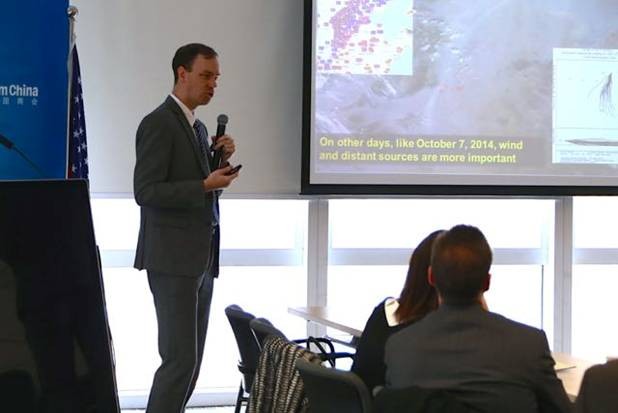By Jared Mazzanti
Anders Hove and several of his colleagues from the Paulson Institute spoke at the AmCham China Conference Center on Wednesday, April 8, to discuss how market forces can help improve air quality so that all of China can breathe easier.
Many concerned citizens and environmental watchers focus on PM2.5 levels as a primary measure of air quality. While PM2.5 emissions in China come from many different sources, industry serves as a major culprit in producing those emissions. As Hove shared, many key stakeholders in China believe that economic growth and strong environmental policy are incompatible concepts, and this lack of buy-in inhibits progress in holding emitters of pollution accountable. However, implementation of market mechanisms, such as tying bank loans to green building requirements, can play an important role in encouraging compliance.
Despite the dangerously high levels of pollution across China, reasons for optimism remain. The average PM2.5 levels in Beijing have not shown an obvious upward trend for at least five years, suggesting massive efforts on the part of the government to keep PM2.5 levels in check have had some success. China’s on-the-books emission standards are already high, but effective enforcement is still a critical component missing from the equation.
Jared Mazzanti is a Communications Intern at AmCham China.

